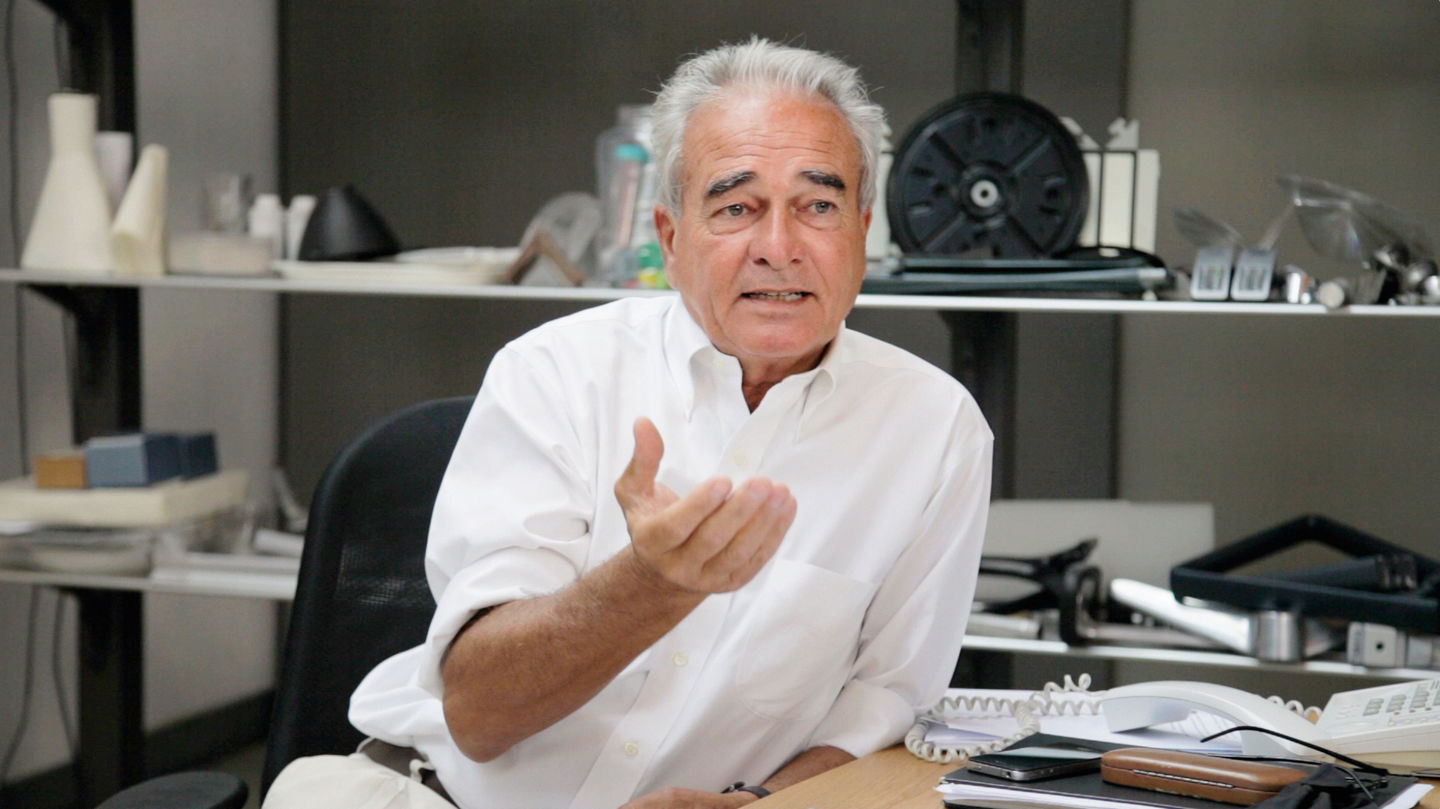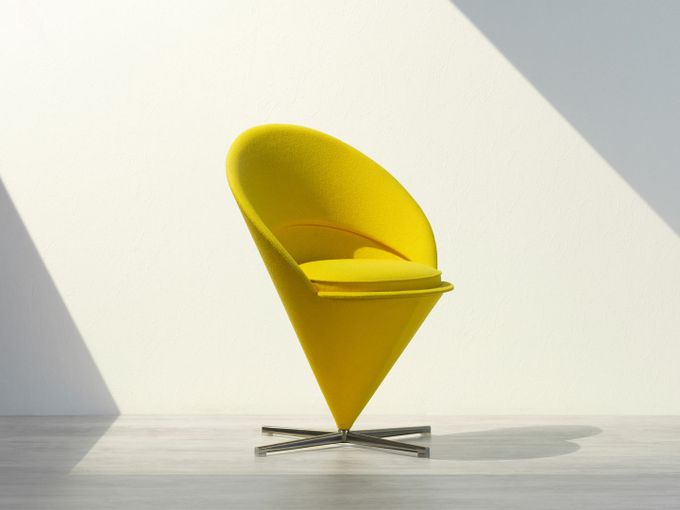When ‘simplicity’ is complex.
Physix
The story of a Vitra original

Before becoming a designer, Alberto Meda was an engineer and his knowledge of mechanics and construction exceeds that of any other designer to collaborate with Vitra. This makes him the ideal partner, able to simplify the structure and design of particularly complex concepts. His solutions are characterised by clarity and visual reduction. One excellent example is the Physix chair, designed in 2012.
The development phase for Physix began with the brief to develop an office chair that is rooted in the tradition established by the Eames Aluminium Chair, yet fulfils today’s demands for ergonomically controlled movement of the seat and backrest. The understated aesthetic and formal clarity of the Eames Aluminium Chair are unsurpassable. The idea of stretching a textile sling between two side elements to create a continuous shell was implemented to perfection by Charles and Ray Eames, and the result became an icon of furniture design.
The development phase for Physix began with the brief to develop an office chair that is rooted in the tradition established by the Eames Aluminium Chair, yet fulfils today’s demands for ergonomically controlled movement of the seat and backrest. The understated aesthetic and formal clarity of the Eames Aluminium Chair are unsurpassable. The idea of stretching a textile sling between two side elements to create a continuous shell was implemented to perfection by Charles and Ray Eames, and the result became an icon of furniture design.
‘Since we are complicated beings, let us be at least surrounded by simple objects, otherwise… what a difficult life!’
For Meda, the question was how can a structural principle that creates a comfortable yet static chair shell be further developed to enable maximum flexibility. Just like the Eameses in their time, Meda explored the possibilities of modern engineering and materials. It soon became apparent that the desired movement could be achieved through the use of high-quality flexible plastic. In keeping with the Eameses’ idea, Physix stretches a textile panel tautly between two side elements. However, the latter are made of plastic and their profile is designed to bend and flex, following the user’s movement. As this action would be uncontrolled without a stabilising mechanism, two ‘antler’ shaped aluminium braces transfer the movement of the side members to the spiral springs beneath the seat. This allows a carefully calibrated, weight-dependent range of motion.


All that was lacking now was the material to be stretched between the side elements. It had to be fitted as taut as possible to support heavier users, while being sufficiently flexible to accompany a dynamic, three-dimensional range of movement, and also demonstrate a quality suited to the rigorous demands of everyday office life. Meda and the developers at Vitra found the solution together: a robust sling panel of multi-thread contoured knit material, whose transparency emphasises the lightweight appearance of the Physix chair.
Physix represents the culmination of a chair typology developed over the course of nearly one hundred years in which the seat and backrest exist in a single continuum. In 1927, Mies van der Rohe achieved the first milestone in this evolution with the MR 20/3 cantilever chair, followed by shell chairs in moulded plywood, sheet metal and plastic by Rietveld, Aalto, Coray and many other designers. And, of course, the legendary Aluminium Chair by Charles and Ray Eames. With Physix, Alberto Meda injects fresh energy into the proven idea of a taut textile sling, without losing the simplicity and straightforward spirit of its iconic predecessors.
Physix represents the culmination of a chair typology developed over the course of nearly one hundred years in which the seat and backrest exist in a single continuum. In 1927, Mies van der Rohe achieved the first milestone in this evolution with the MR 20/3 cantilever chair, followed by shell chairs in moulded plywood, sheet metal and plastic by Rietveld, Aalto, Coray and many other designers. And, of course, the legendary Aluminium Chair by Charles and Ray Eames. With Physix, Alberto Meda injects fresh energy into the proven idea of a taut textile sling, without losing the simplicity and straightforward spirit of its iconic predecessors.

Publication date: 5.4.2019
Images: Florian Böhm, Marc Eggimann, Marcus Gaab, Alberto Meda




